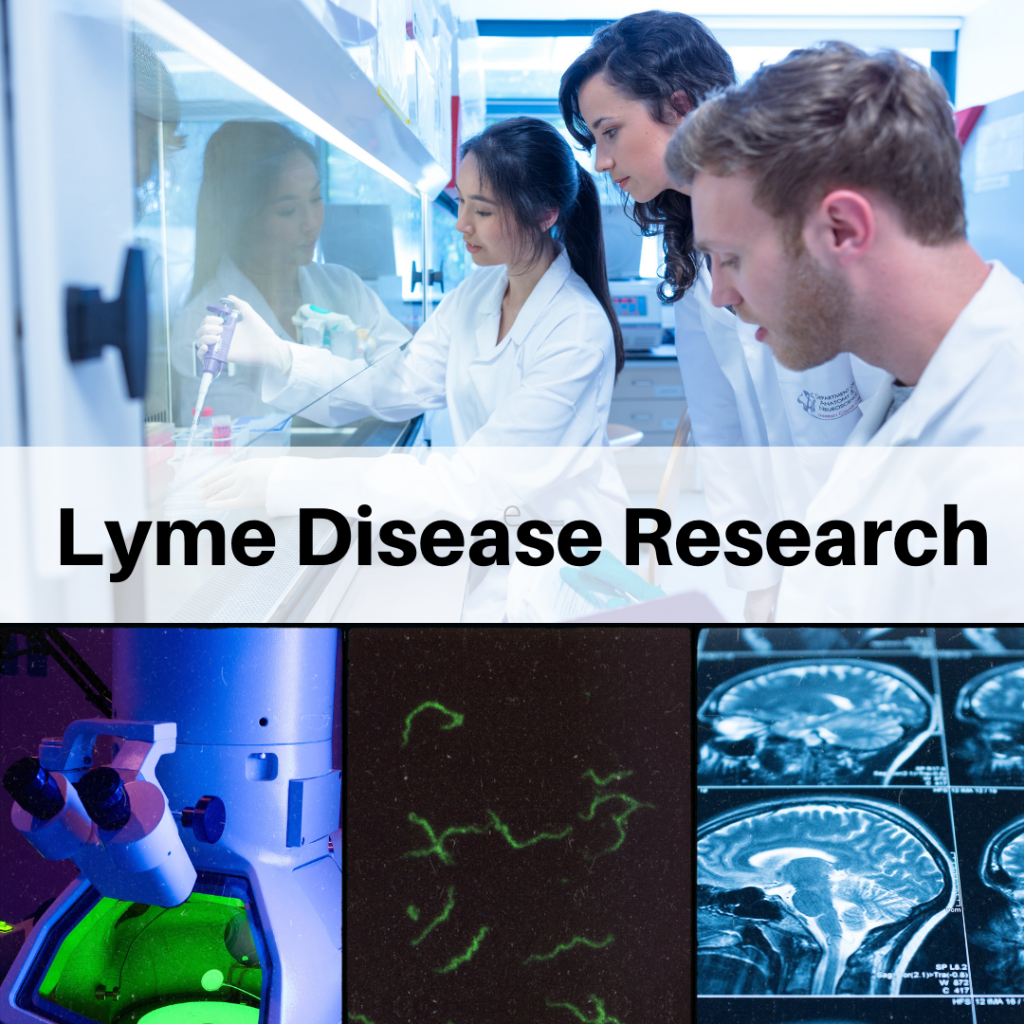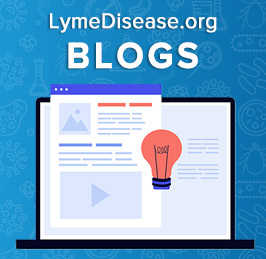LYMESCI: Have we finally reached a Lyme research tipping point?

If there were such a thing as an Olympic competition for Lyme research, I have a pretty good idea who would be on Team USA.
A recent paper entitled “Recent Progress in Lyme Disease and Remaining Challenges,” co-authored by 31 researchers from 19 separate institutions, reads like an all-star lineup of Lyme disease researchers.
The authors include many names familiar to the Lyme community including: Monica Embers, PhD, John Aucott, MD, Kim Lewis, PhD, Ed Breitschwerdt, DVM, DACVIM, Nicole Baumgarth, DVM, PhD, and Brian Fallon, MD.
The lead author, Jason Bobe MSc, is an associate professor in the genetics and genome science department at the Icahn School of Medicine at Mount Sinai in New York City.
Bobe is part of Mount Sinai’s Resilience Project. It seeks to discover why some people are more able than others to resist or recover from certain illnesses, including Lyme disease.
Recent advancements in Lyme disease
This paper does an excellent job of summarizing the advancements in Lyme and tick-borne diseases over the past five years. It also identifies gaps in knowledge, remaining challenges, the need for additional funding and further research.
The paper paints a comprehensive picture of what causes acute Lyme disease, including immune activation, dissemination, and inflammation. In addition, it looks at newly discovered biological markers that may aid in the development of improved diagnostics.
Included is a detailed description of several potential causes of symptoms of Lyme disease that persist after standard treatment. The authors propose that the most salient hypotheses are “persistence of infection or antigenic debris, persistence of inappropriate immune activation and inflammation, or some combination of these.”
Topics covered in the publication includes the weakness of current standard Lyme disease diagnostics and a review of several emerging diagnostic assays. Included in the section on treatment is a review of recent drug discoveries and complementary therapies, including natural and botanical medicines.
Direct detection test for Lyme?
Another co-author, Brandon Jutras PhD, is an assistant professor of biochemistry in the Virginia Tech College of Agriculture and Life Sciences. His team is working to develop a new direct diagnostic test for acute Lyme disease.
In 2019, Jutras discovered that Borrelia burgdorferi sheds peptidoglycan, a mesh-like substance that forms the cell wall of the bacteria once it invades the human body. Although all bacteria have peptidoglycan, many do not shed it.
“Current Lyme disease diagnostics are indirect, meaning that the tests are detecting antibodies produced by the human in response to the infection, rather than detecting the bacteria itself,” said Jutras. “This method is prone to error and relies on the individual’s immune system, which can take weeks to make enough antibodies to detect, not to mention that everyone’s immune system is different.”
“We are trying to develop and critically test a procedure whereby we detect peptidoglycan, which is a unique piece of the bacterium that causes Lyme disease,” said Jutras. “The piece is a specific and abundant fragment that may act as a direct biomarker for an active infection and, in theory, be detectable within hours of transmission from an infected tick.”
Other Lyme research
Portions of the paper include research done by the authors. Some highlights include:
- Monica Embers showing Lyme persists after a standard course of antibiotics, Lyme spirochetes in multiple organs after antibiotics, and Lyme spirochetes in an autopsied brain (despite treatment).
- John Aucott, ongoing research as Director of the Johns Hopkins Lyme Disease Research Center, including examining why brain inflammation persists after Lyme disease treatment.
- Kim Lewis’ work on eradicating drug-tolerant infections as well as his new investigation into the gut microbiome as it pertains to persistent Lyme disease.
- Brain Fallon’s decades of research on neurological Lyme which will be continuing at Columbia University’s new Cohen Center for Health and Recovery from Tick-Borne Diseases.
- Nicole Baumgarth’s research into how Lyme spirochetes evade the immune system.
- Ed Breitschwerdt and Richard Maggi’s decades of work on developing treatment for Bartonella and other co-infections.
The authors also encourage collaborative efforts like that being done by co-author Liz Horn, PhD, the principal investigator at the Lyme Disease Biobank (LDB). The LDB was created by the Bay Area Lyme Foundation and has partnered with the National Disease Research Interchange as well as LymeDisease.org’s MyLymeData research project.
Need for federal funding
The authors highlight the urgent need for adequate federal funding to “support advancement in the scientific and clinical understanding of the disease, or to develop and evaluate innovative approaches for prevention, diagnosis, and treatment.”
The paper reads like a summary of all 14 of the previous Tick-borne Disease Working Group (TBDWG) sub-committee reports generated by the 2018 and 2020 working groups. If you’ve read any of the TBDWG sub-committee reports (some of them over 100+ pages long), you know this summary was a heavy lift.
Monica Embers was recently appointed to the 2021-2022 TBDWG. I hope this paper will be required reading for the 13 other members!
“It is very exciting to have the opportunity to shape future funding priorities regarding tick-borne disease research and response,” said Embers. “I’d like to see more of an emphasis on the neurological impacts of Lyme disease and a renewed commitment to improving how we diagnose and treat the disease.”
Outline
To summarize the entire paper would be difficult as it is over 80 pages long, with nearly 350 references, and swimming in deep science. If you are interested in a particular topic, I have provided an outline and a link to the paper below.
The topics included in this paper include:
- Introduction
- Clinical and Translational Medicine
- Diagnosis
- Exposure to Ticks
- Serological Testing
- Signs and Symptoms
- EM Lesion
- Direct Detection of Bb
- Emerging Diagnostics
- Treatment
- Drug Discovery and Preclinical Studies
- Complementary Therapies
- Well-Defined LD Patient Subgroups With Posttreatment Sequelae
- Antibiotic Refractory Lyme Arthritis
- PTLD
- Diagnosis
- Fundamental Knowledge
- Genomic Insights From Borreliaceae Lineages
- Proteomic Insights From Borreliaceae Lineages
- Transmission of Bb via Ixodes Spp. Vectors
- Pathogenesis
- Immune Activation and Inflammation in Untreated LD
- Inflammation and Immune Dysregulation Among Patients With Persistent LD
- CRP in Patients With Persistent Symptoms Following Treatment
- IFN-y and Antibiotic-Refractory Lyme arthritis patients
- CCL19 Among PTLD Patients
- IL-23 Among European PTLD Patients
- Autoantigens and Self-Reactivity In LA
- Persistence
- Persistent Antigenic Debris
- Persistent Infection
- Prevention
- Ecological Prevention
- Human Vaccine
- Field Building
- Biorepositories and Research Cohorts
- Lyme Disease Biobank
- Lyme Disease Research
- Long Island Outdoor Worker Cohort
- Data Repositories
- LymeMIND Commons
- Biorepositories and Research Cohorts
- Discussion
Reference
Bobe JR, Jutras BL, Horn EJ, Embers ME, Bailey A, Moritz RL, Zhang Y, Soloski MJ, Ostfeld RS, Marconi RT, Aucott J, Ma’ayan A, Keesing F, Lewis K, Ben Mamoun C, Rebman AW, McClune ME, Breitschwerdt EB, Reddy PJ, Maggi R, Yang F, Nemser B, Ozcan A, Garner O, Di Carlo D, Ballard Z, Joung H-A, Garcia-Romeu A, Griffiths RR, Baumgarth N and Fallon BA (2021) Recent Progress in Lyme Disease and Remaining Challenges. Front. Med. 8:666554. doi: 10.3389/fmed.2021.666554
LymeSci is written by Lonnie Marcum, a Licensed Physical Therapist and mother of a daughter with Lyme. In 2019-2020, she served on a subcommittee of the federal Tick-Borne Disease Working Group. Follow her on Twitter: @LonnieRhea Email her at: lmarcum@lymedisease.org.




















We invite you to comment on our Facebook page.
Visit LymeDisease.org Facebook Page